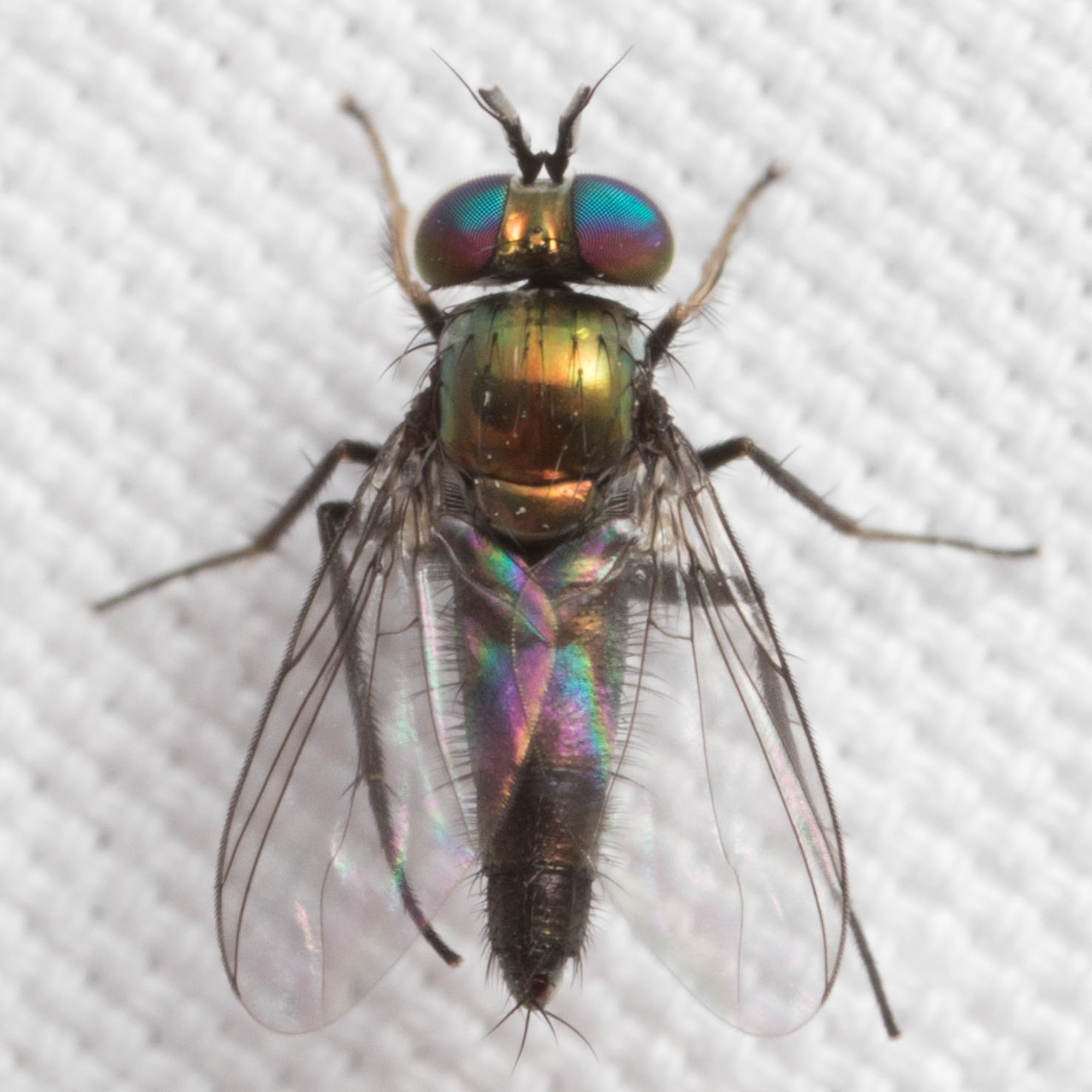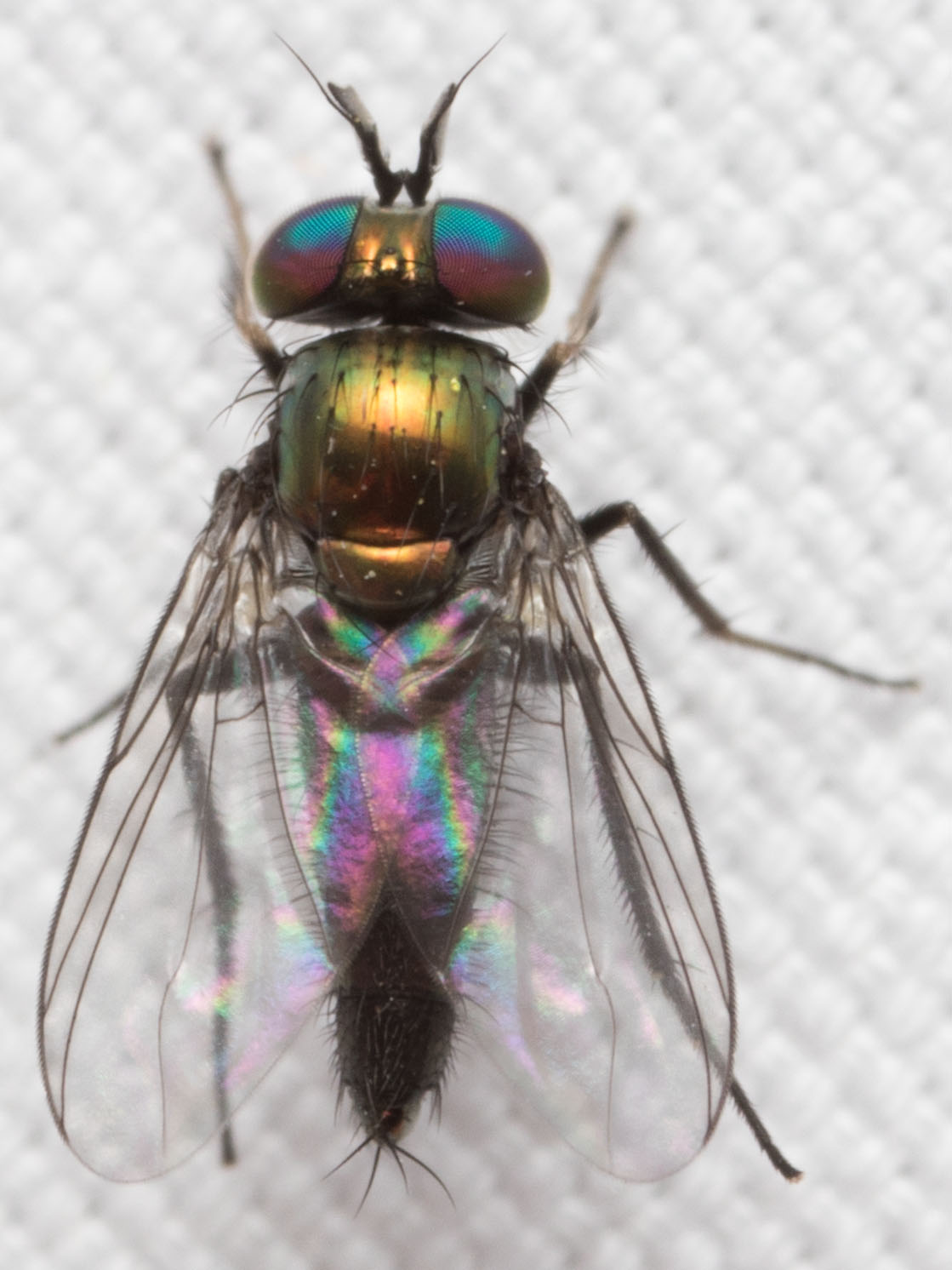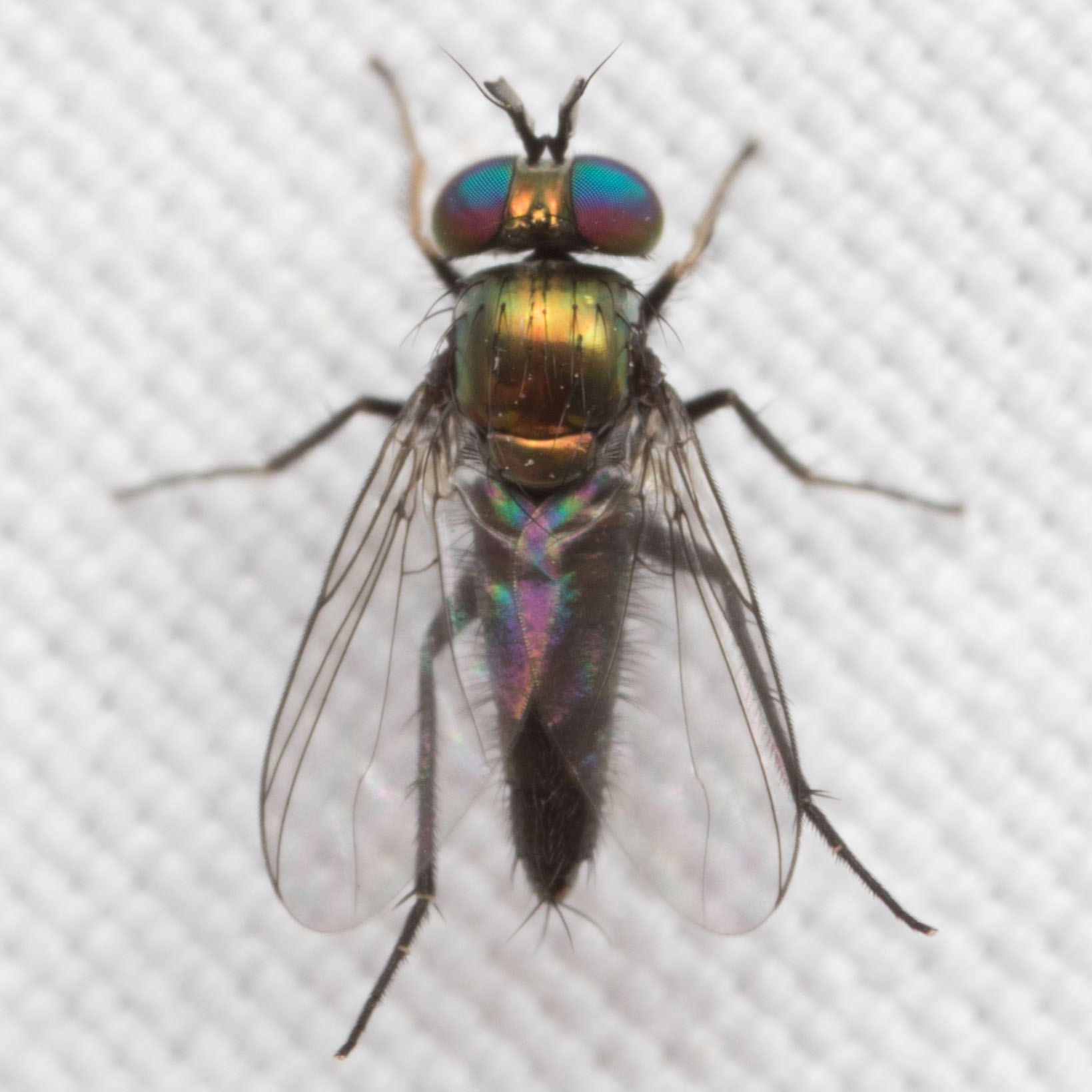Diptera.info :: Identification queries :: Diptera (adults)
|
[Asyndetus harbeckii] Dolichopodidae, Deer Park TX USA 27-IV-2024
|
|
| John Schneider |
Posted on 14-05-2024 04:18
|
|
Member Location: USA Posts: 80 Joined: 03.11.09 |
Came to blacklight in suburban lawn next to Deer Park Prairie (tallgrass prairie). No other angles taken. Specimen not collected.
John Schneider attached the following image:  [189.18Kb] Edited by John Schneider on 21-05-2024 03:55 |
|
|
|
| Igor Grichanov |
Posted on 14-05-2024 09:47
|
|
Member Location: St.Petersburg, Russia Posts: 1795 Joined: 17.08.06 |
Asyndetus sp.
Igor Grichanov |
| John Schneider |
Posted on 14-05-2024 09:57
|
|
Member Location: USA Posts: 80 Joined: 03.11.09 |
Thanks, Igor! |
|
|
|
| John Carr |
Posted on 14-05-2024 15:56
|
|
Super Administrator Location: Colorado, USA Posts: 10552 Joined: 22.10.10 |
Asyndetus harbeckii Van Duzee, 1914 based on the unusual antennae. The species is previously recorded only from the type locality in New Jersey. Van Duzee, M.C. 1914. New species of North American Dolichopodidae (Dip.). Entomological News 25: 433–443, pl. 18. |
| John Schneider |
Posted on 15-05-2024 02:55
|
|
Member Location: USA Posts: 80 Joined: 03.11.09 |
Wow! Thanks, John. |
|
|
|
| John Schneider |
Posted on 16-05-2024 03:49
|
|
Member Location: USA Posts: 80 Joined: 03.11.09 |
John: By the way, here are two more photos, my only other ones of this fly. I was considering them to be the same angle as the first one. After Igor said Asyndetus, I looked at images of that genus on Bugguide, even though BG does not have all the species. Looking only at BG pics and as yet unaware of harbeckii, I was at the time thinking that syntormoides' antennae looked somewhat similar to my fly's. John Schneider attached the following image:  [159Kb] Edited by John Schneider on 16-05-2024 03:50 |
|
|
|
| John Schneider |
Posted on 16-05-2024 03:50
|
|
Member Location: USA Posts: 80 Joined: 03.11.09 |
last photo
John Schneider attached the following image:  [192.61Kb] |
|
|
|
| John Carr |
Posted on 16-05-2024 15:58
|
|
Super Administrator Location: Colorado, USA Posts: 10552 Joined: 22.10.10 |
Here is the description of the antenna of male Asyndetus syntormoides: "Antenne large, black; first joint cylindrical; second joint produced into a thumb-like lobe overlapping the third joint on the inside to a distance nearly equal to half its length; third joint large, nearly three times as long as broad, of nearly equal breadth as far as its middle, then tapering to a point, clothed with short gray pile and bearing a dorsal arista covered with very short pubescence." See plate III (PDF page 97) figure 50 at https://www.biodi...item/98468. And here is A. harbeckii: "antennae black, third joint brown; second joint long, arcuated, with a bristly basal projection; third joint large, flattened, with short pubescence, rounded below, with two points at apex, attached to the second joint near the center of the upper edge; arista inserted near this central point, distinctly pubescent." This is also illustrated, on plate XVIII (preceding text page 433) figures 12 and 13 of the cited article at https://www.biodi...raphy/2359. The figure is not a compelling match but is much closer than the figure of A. syntormoides. |
| John Schneider |
Posted on 16-05-2024 18:49
|
|
Member Location: USA Posts: 80 Joined: 03.11.09 |
Thanks, John. I found those descriptions and illustrations, and I see what you mean. By the way, for some reason, when I looked at the books linked above, I could not find the harbeckii description/illustration you mentioned. However, I was able to find that description/illustration in the following book: https://www.googl...amp;gbpv=0 Edited by John Schneider on 21-05-2024 03:53 |
|
|
|
| Jump to Forum: |













